The Inns of Old Dawley
By
A.W. Bowdler
The inns of old Dawley were a prominent feature of the social life of the town especially during the Victorian and Edwardian era, and provided the main centres of leisure for the male population.
Local football clubs, pigeon and quoits playing clubs and friendly societies were among those who used the Pub as their headquarters and the Crown Inn at about this time became a recognised centre of musical comment and political debate.
The Landlord of Dawley “Crown Inn” was Mr William Martin, a former Schoolmaster, and a staunch Tory, and with many of his customers’ strong adherents of the Liberal Party, it was not surprising that many fierce but never bad tempered political arguments took place at the Inn.
During the 1906 and 1910 General Election, of which the vital issues for the electors to decide were the “Big Loaf” and “Ninepence for Fourpence”, great excitement prevailed, and during one of these campaigns the Rt. Hon. David Lloyd George addressed a meeting at the Anstice Hall, Madeley, and I still remember as a boy of ten years of age, trotting alongside my father from Dawley to Madeley to see and hear the great orator. (See explanatory note at end of chapter).
When these arguments simmered down, as a delightful contrast, the landlord’s daughter, Miss Ethel Martin, an accomplished pianist would play the best music in the best room, and sometimes accompany visiting Midland singers of renown.
It is however related that on one of these musical occasions several members of an old Dawley Glee Choir were having an enjoyable evening and one local tenor, and a chorister at the Parish Church, had probably tasted a little too much of the strong brew of the old days for as he sang the opening line of his chosen song “Let me like a Soldier Fall” immediately obliged by falling on to the smoke room fireplace.
Another old Dawley Inn, very often in the public eye, was the “King’s Arms” in King Street and although now demolished, was almost certain to have been the largest Inn in Old Dawley. Its spacious frontage opened on to King Street, and this was the reason why it became a favourite spot for travelling show folks, and it was no strange sight to see a boxing booth, and it’s tough fighters standing at the entrance chucking pairs of boxing gloves to the gawping young miners and ironworker who stood in the street, with a challenge that any local lad who could stand up three rounds with a booth boxer would receive the handsome sum of £1.
One of the travelling booths had a special attraction; a woman boxer, and the proprietor offered five pounds to anyone who could knock her out. In making this offer, which in those days seemed a colossal sum of money, it would appear the booth proprietor was of the opinion that even in the tough little industrial town of Dawley, no one would attempt beyond sparring to knock out a woman in public view.
There is nearly always the exception to the rule for a few nights later a local miner climbed through the ropes when the booth proprietor made his five pounds challenge, and it was believed he had been advised by a few of his pals, that it was easy money. I often heard years ago, citizens of Old Dawley relate this woman boxer was no “pushover “, but was no match for this locally known tough miner, and many suspected it was a “put up” to give the packed booth audience good entertainment.
The fight fans of by gone days were in for a big surprise for after a bit of sparring, the miner let go a punch and the much advertised woman boxer was on the floor clean knocked out. The booth proprietor’s anger was such that he refused to pay, and in consequence there was pandemonium and beyond this I was never able to get details of how the visit of the woman boxer to Dawley and her subsequent knock-out ended.
Many of the Public Houses of Old Dawley are now closed, all had their own special features and provided a welcome change to the men who toiled long hours in the pits and iron forges of Old Dawley, with little organised recreation.
Opening at 6am to 11pm and with strong home-brewed beer at threepence a pint, it was a common sight to see drunken men reeling along the street.
The pubs of Old Dawley however had their bright side for in a period when a heaped up barrowful of good coal could be purchased for sixpence; to walk into a Dawley Inn on a bitter cold winters night, the customer was always greeted with a huge open hearth fire and being served with home brewed beer which really did taste of malt and hops or a drop of good whiskey at threepence a nip , one soon had a feeling of well-being, and added to this on occasions, free bread and cheese and onions would be placed on the Inn tables.
The old time public house has faded out to be replaced by the ultra modern version of an English Inn, but my vote still remains with the atmosphere of the Old Dawley Pub with its red quarried floors, scrubbed each morning and its saw-dust filled spittoons and a wealth of unselfish good feeling which does not exist in our modern society.
Such was the esteem held for the local Public Houses of Old Dawley that in 1866 a local resident with a poetical mind put into verse his feelings of the local pubs and their landlords.
Explanation of the terms “Big Loaf” and “Ninepence for Fourpence
The United Kingdom general election of 1906 was held from 12 January to 8 February 1906.The Liberals, led by sitting minority Prime Minister Henry Campbell-Bannerman, won a large majority in the election. The Conservatives under Arthur Balfour lost more than half their seats, while the Labour Representation Committee was far more successful than in 1900 and after the election would be reformed as the "Labour Party" with 29 MPs and Keir Hardie as leader
This election was a landslide defeat for the Conservative Party and their Liberal Unionist allies, with the primary reason given by historians as the party's weakness after its split over the issue of free trade (Joseph Chamberlain had resigned from government in September 1903 in order to campaign for Tariff Reform, which would allow 'preferential tariffs'). Many working-class people saw this as a threat to the price of food; hence the debate was nicknamed 'Big Loaf, Little Loaf'. The Liberals' landslide victory of 125 seats over all other parties led to the passing of social legislation known as the Liberal reforms. This was the last election in which the Liberals won an absolute majority in the House of Commons, and also the last election in which the Liberals won a majority share of the popular vote.
Social reform before the outbreak of the First World War
Lloyd George’s major achievement during the years immediately before the war was in the field of social insurance. Inspired by a visit to Germany (1908), where he studied the Bismarckian scheme of insurance benefits, Lloyd George decided to introduce health and unemployment insurance on a similar basis in Britain. This he did in the National Insurance Act of 1911. The measure inspired bitter opposition and was even unpopular with the working class, who were not convinced by Lloyd George’s slogan “nine pence for four pence,” the difference in these two figures being the employer’s and the state’s contribution. Lloyd George, undeterred, piloted his measure through Parliament with great skill and determination. He thus laid the foundations of the modern welfare state and, if he had done nothing else, would deserve fame for that achievement.
The National Insurance Act Part I provided for a National Insurance scheme with provision of medical benefits. All workers who earned under £160 a year had to pay 4 pence a week to the scheme; the employer paid 3 pence, and general taxation paid 2 pence (Lloyd George called it the "nine pence for four pence"). As a result, workers could take sick leave and be paid 10 shillings a week for the first 13 weeks and 5 shillings a week for the next 13 weeks. Workers also gained access to free treatment for tuberculosis, and the sick were eligible for treatment by a panel doctor.
The Public Houses of Dawley in 1866
Come, Ladies and Gentlemen, listen awhile, I’ll sing you a song that will make you all smile. The Publics of Dawley, I’ll take them all through. It’s wrote by the Prophet so you’ll find it all true.
Now I will commence at the top of the Green, and there is the Stag by James Ball to be seen. But conduct yourself well or sure as you’re born, The “Stag” will turn rough and give you the horn.
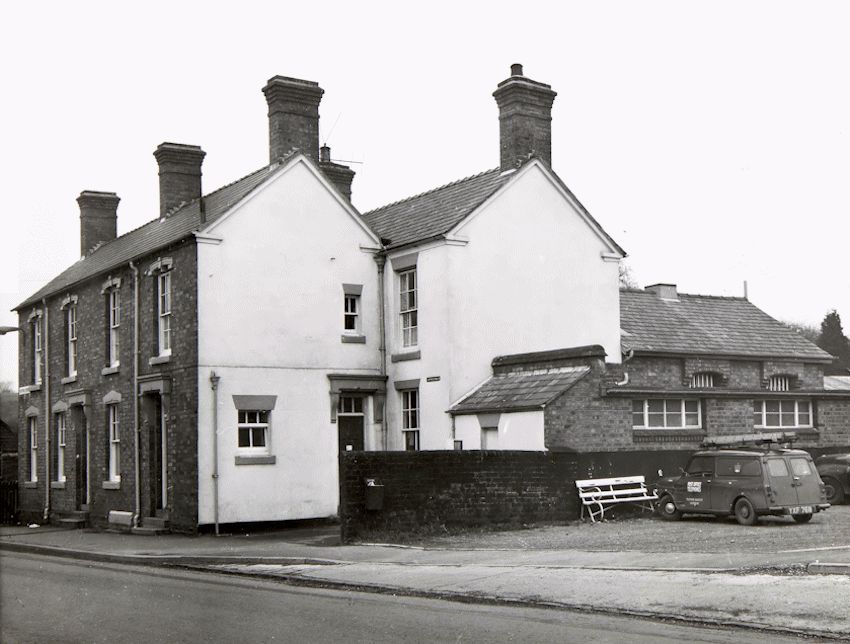
Dawley Police Station; on the site of the Stag in Burton Street.
Next is Tom Bowdler’s, the sign the “King’s Head”, A good tempered fellow and very well fed. He is pretty well known and so is his beer and you‘ll always meet with civility here.
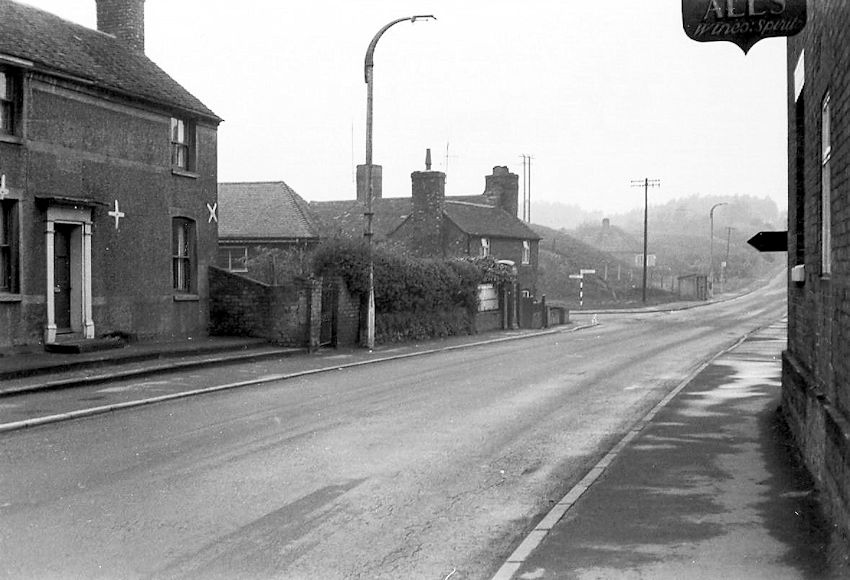
The building on the left was the King’s Head which stood in Burton Street on the opposite side of the road from the Royal Exchange
The next in rotation is the “Royal Oak”, and under this tree is cracked many a joke. He keeps a good tap and has always a stock, And this Landlord you’ll find a jolly old cock.
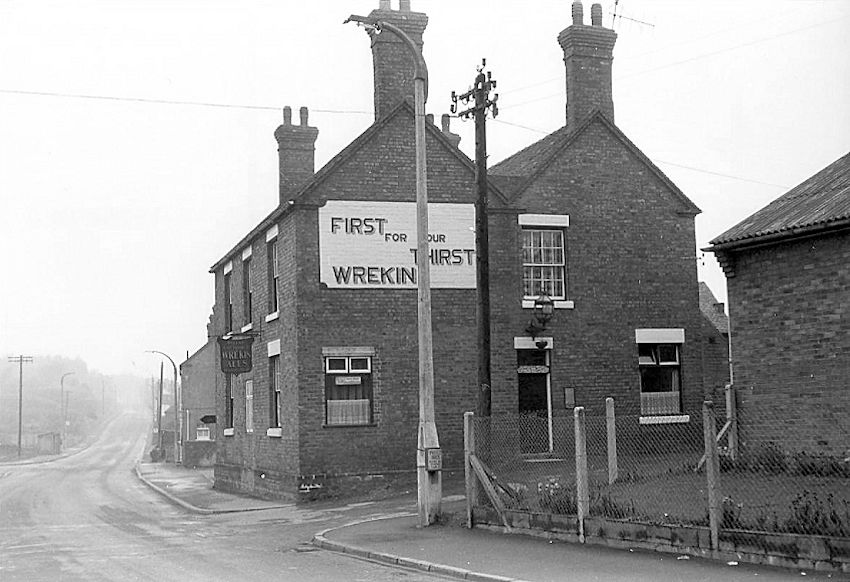
The Royal Exchange originally called the Royal Oak situated in Burton Street.
The “Elephant and Castle” by Summers comes next, A very quiet animal and seldom gets vexed. But don’t take too much or you’re sure to get drunk, for nought but good liquors come out of his trunk.

The Elephant & Castle at the top of High Street.
The next is the “George” and kept by the same, For George Lewis is the good Landlord’s name. And you will find him a hearty good fellow, with plenty of beer, and good ale in the cellar.
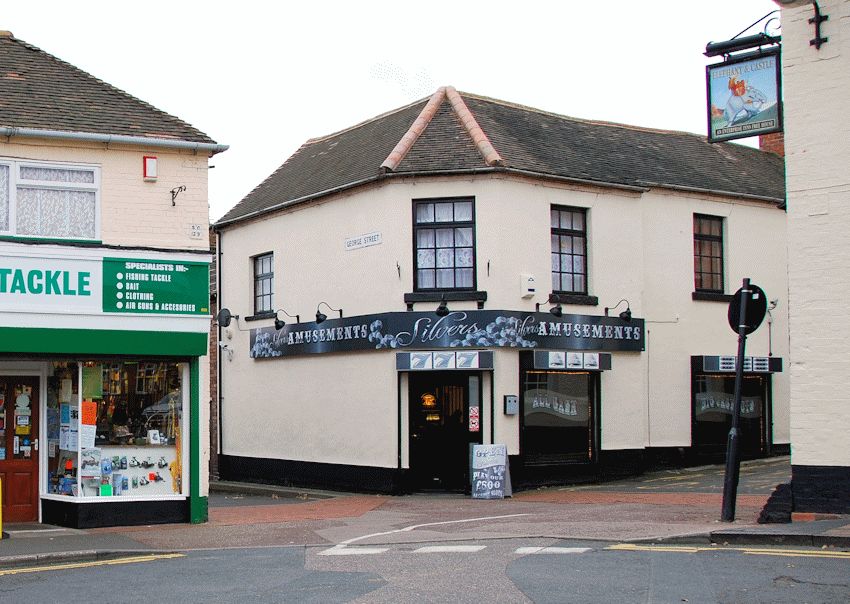
The George in George Street; now occupied by a charity shop.
The next is Bob Vaughan’s rather out of the way; as he’s a new Landlord I’ve not much to say. I expect he’ll do well, we all know he will try it, for a new Market Hall they are building close by it.
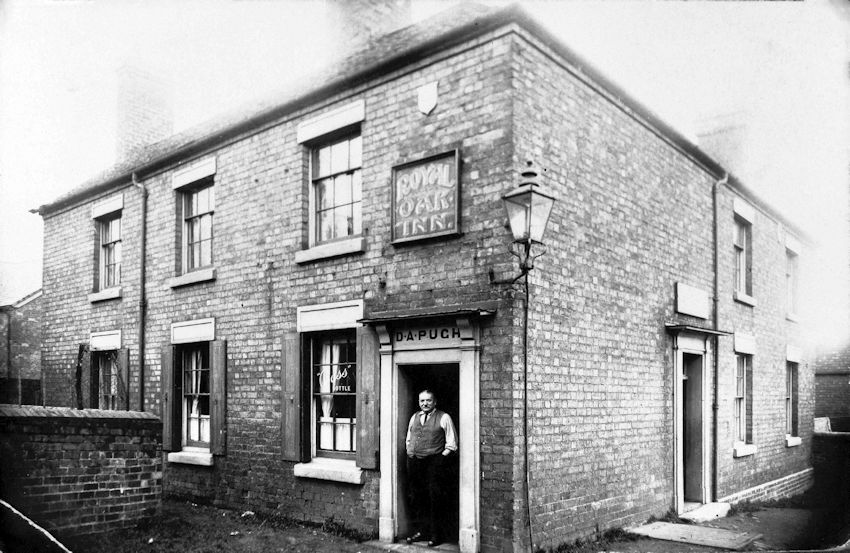
The Royal Oak (Bob Vaughan’s) in George Street with David Alfred Pugh standing in the doorway. The building was demolished in the late 1970s to make way for a service road to a new supermarket.
The next is the “Talbot” by William Smallman. A jolly good brick deny it who can. To tell you about all his good things I cano, but he keeps to amuse you; a splendid piano.
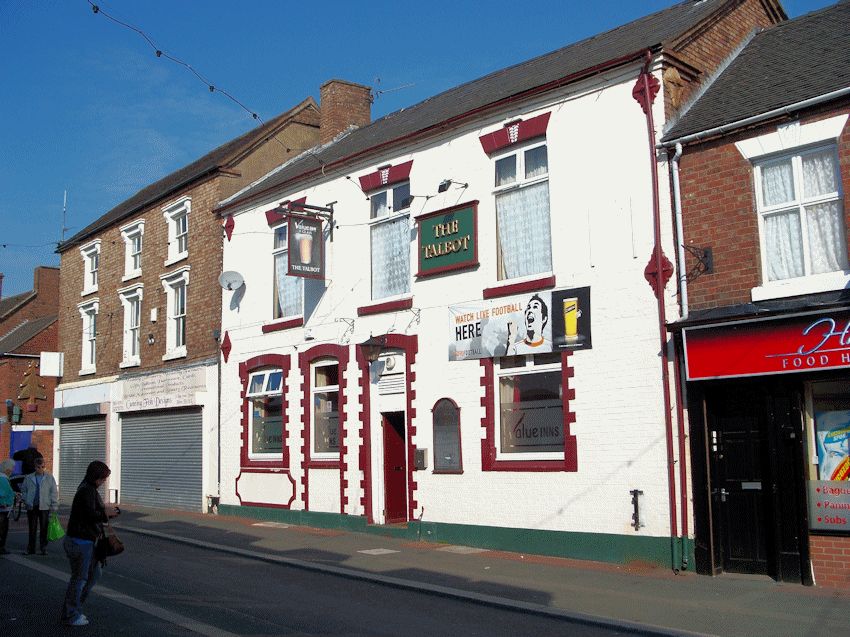
The Talbot Pub in High Street; originally called the Angel.
Adjoining the “Talbot” is the sign of the “Swan”, By Benjamin Roden the right sort of mon. Should you travel that way I hope you’ll not pass, you’ll meet with civility and a good sparkling glass.
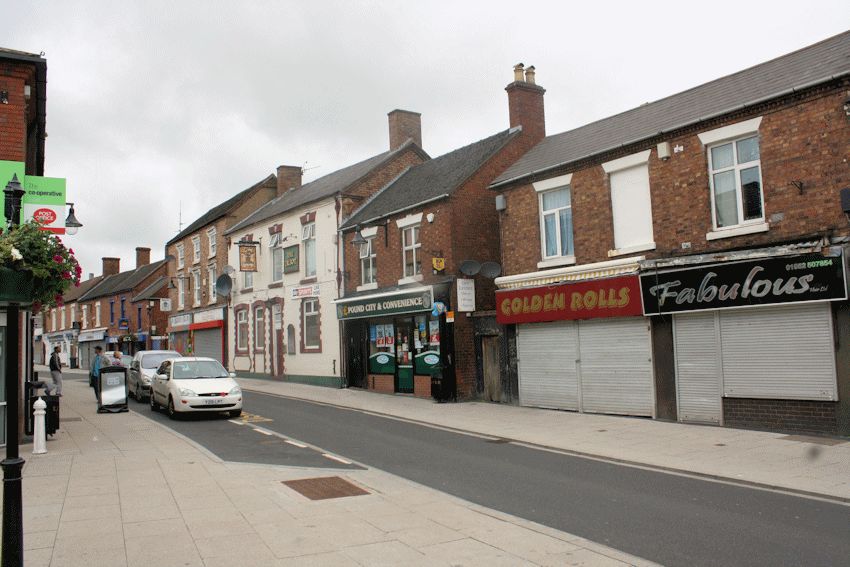
The Swan in High Street. The poem says it is adjoining the Talbot but census returns put it next but one.
Then if Chapel Street you should chance to go down, you’ll find Polly Perkins at the “Rose & Crown”. A glass of good home-brewed you always can find, and the widow and daughter wait on you so kind.
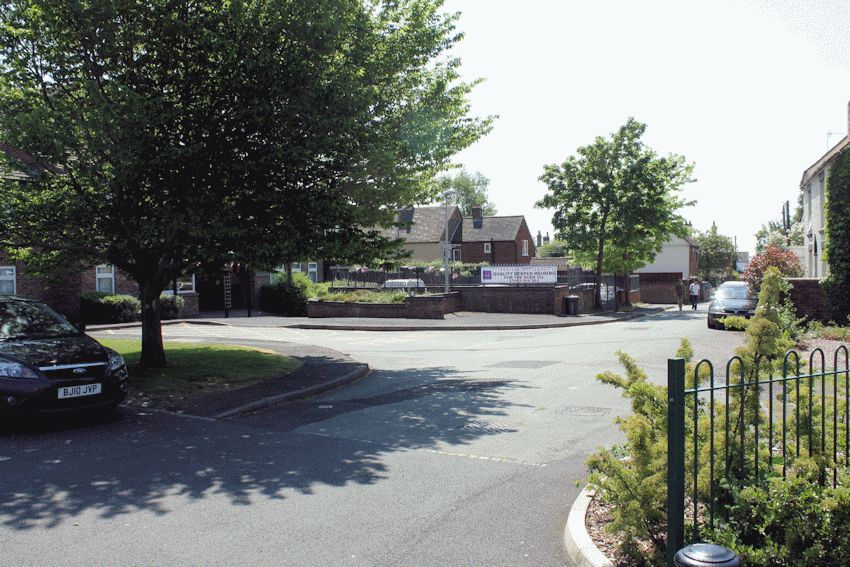
The probable position of the Rose & Crown in Chapel Street.
The next is the “Summer House” in the same street, a house with every comfort complete. It’s kept by Dick Williams, whom all men regard, for he’s recently started a Public Sale Yard.

The Summer House stood in Chapel Street and on the right of the house in the photograph.
In returning to High Street there is the “Seven Stars”, a house well conducted though they sometimes have wars.
It’s a house at which both high and low calls, for there’s always a good glass of ale at Tom Ball’s.
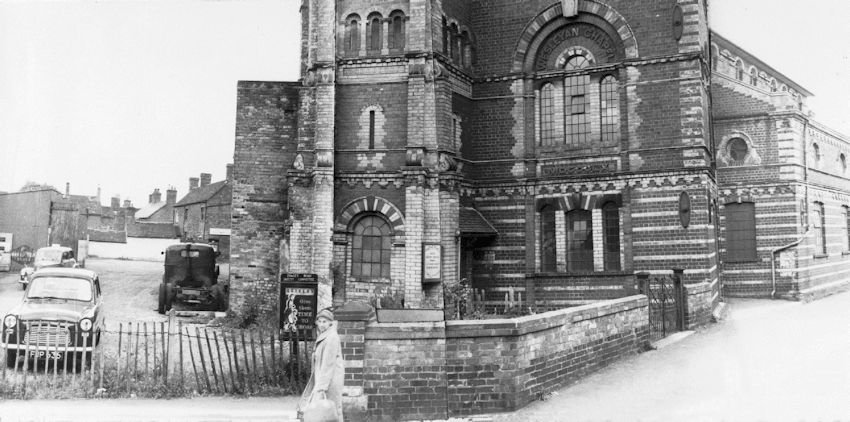
The Seven Stars stood in High Street approximately where the car is on the left of this photograph; next to the Wesleyan Chapel.
Now on t’other side a little lower down, you’ll find Thomas Evans, Landlord of the “Crown”. He’s a straight-forward fellow without dirty tricks, and he’ll sell you liquors, coffins and bricks.

The Crown in High Street.
The “Railway Tavern” is kept by George Poole, He’s been with the Yankees, so I guess he’s no fool. There’s a good glass of home-brewed, you’ll not be mistaken, and he’s got Mutton Chops, Ham, Eggs and Bacon.
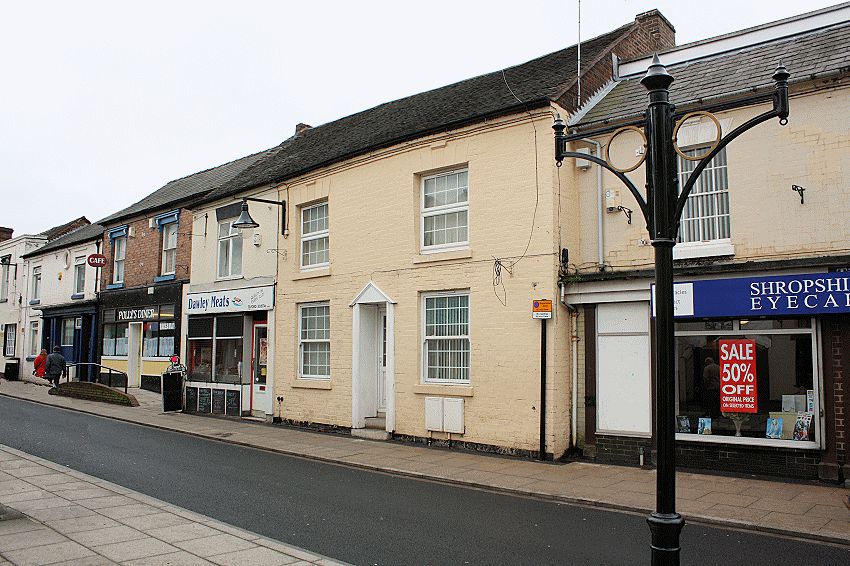
The building at 41 High Street, originally the Railway Tavern.
Then comes Widow Deakin’s, the sign is the “Plough”, and that’s a good place for amusement just now. On a Market night call, you cannot do wrong, Will plays the piano, and you’ll hear a good song.
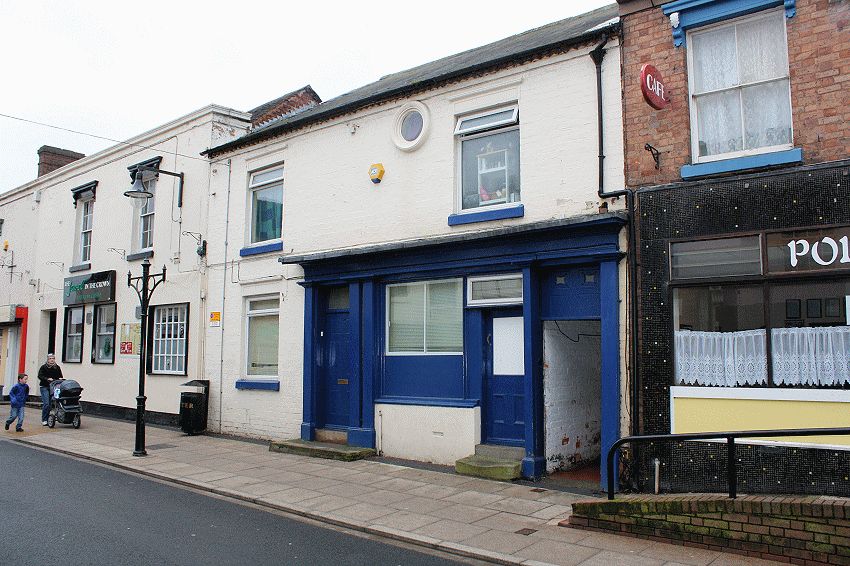
The building at 49 High Street, originally the Plough.
There’s a house down the hill, and whoever forsook it, and it’s kept by a good little fellow; Tom Ducket.
Just give him a call as you go down the hill. He keeps a good tap and full measure doth fill.
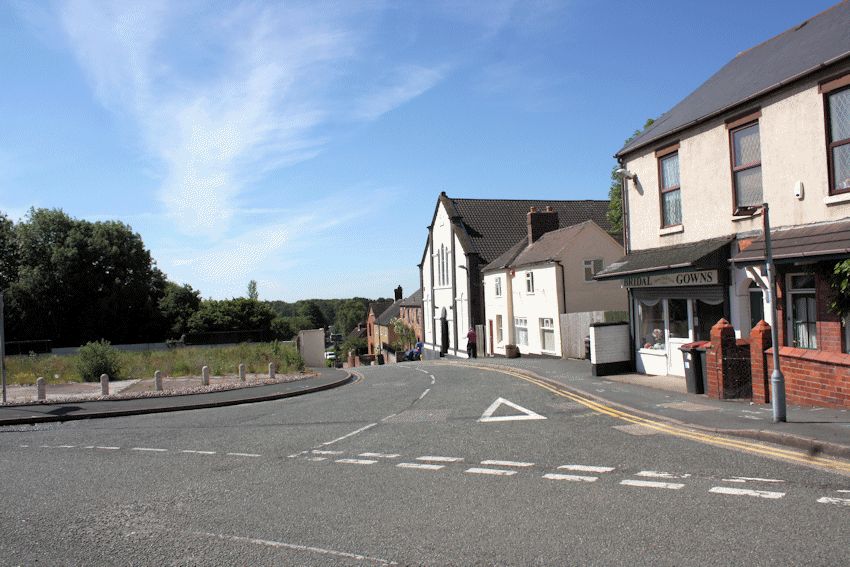
This area of the Town Hall built in 1873, has been rebuilt since the poem was written in 1866. The pub kept by Tom Ducket would have been here at the top of the Dun Cow Bank.
In ascending the hill there stands the “Dun Cow”, and she yields most excellent liquor I vow. Just give her one trial you’ll satisfied be, and oblige the landlord; Mr. P.G.
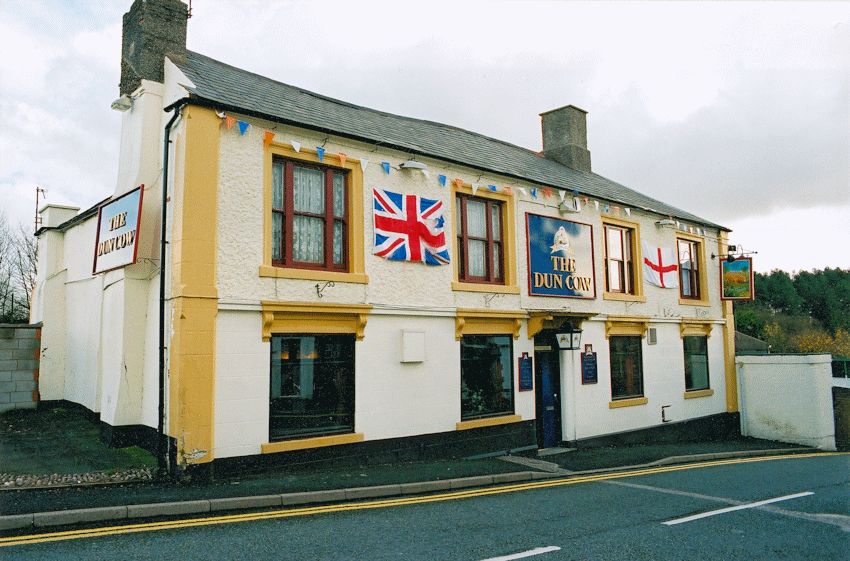
The Dun Cow public house closed in 2008 and demolished soon after.
Then comes the “Lord Hill” kept by William Tranter. A jolly old brick though a bit of a ranter. For good liquors and comfort none can excel. He’s the model landlord; it’s known very well.
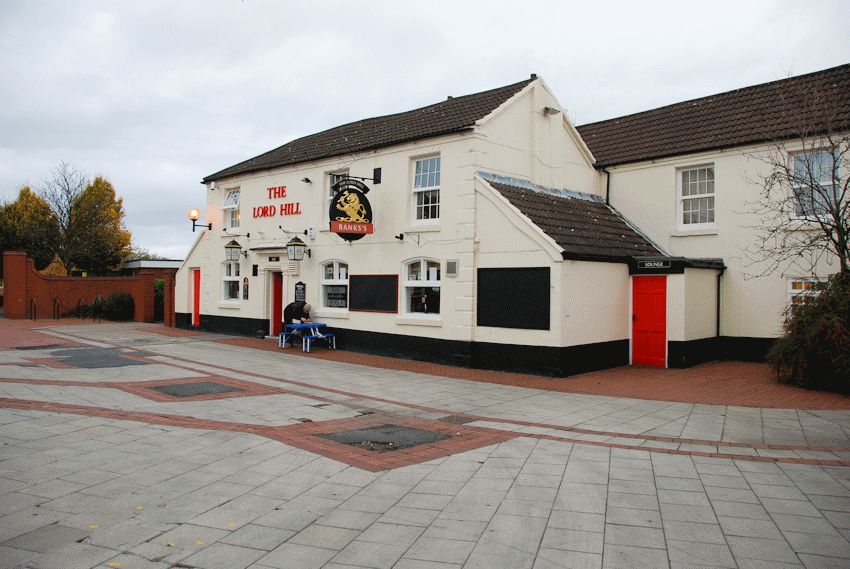
The Lord Hill standing at the bottom of High Street.
William Clemson comes next; the sign, the “King’s Arm”. Which for independents and show folk; possesses great charm.
About it I’ve got very little to say. It’s a very large house, but rather out of the way.
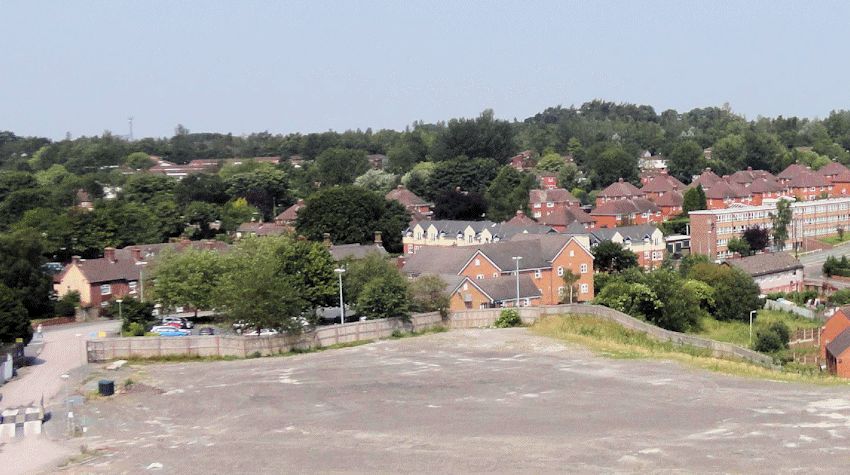
The area in King Street; in front of the Doctors, previously occupied by the King’s Arms.
Below is George Hayward, the sign the “Queen’s Head”. The Landladies civil, the Landlords well bred.
If for good ale you’re looking; never pass it by, but step in and take a bumper to try it.
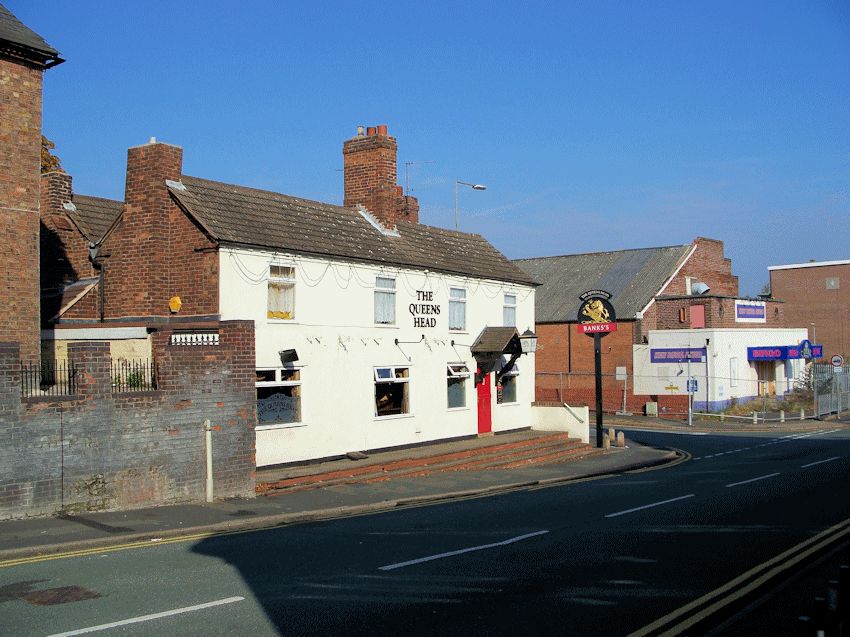
The Queen’s Head in King Street.
But to conclude up the hill we must push on, And there’s a new house kept by Mr. J. Rushton. His beer you’ll find pure and remarkably pleasant. So with your permission, I’ll stop at the “Pheasant”.
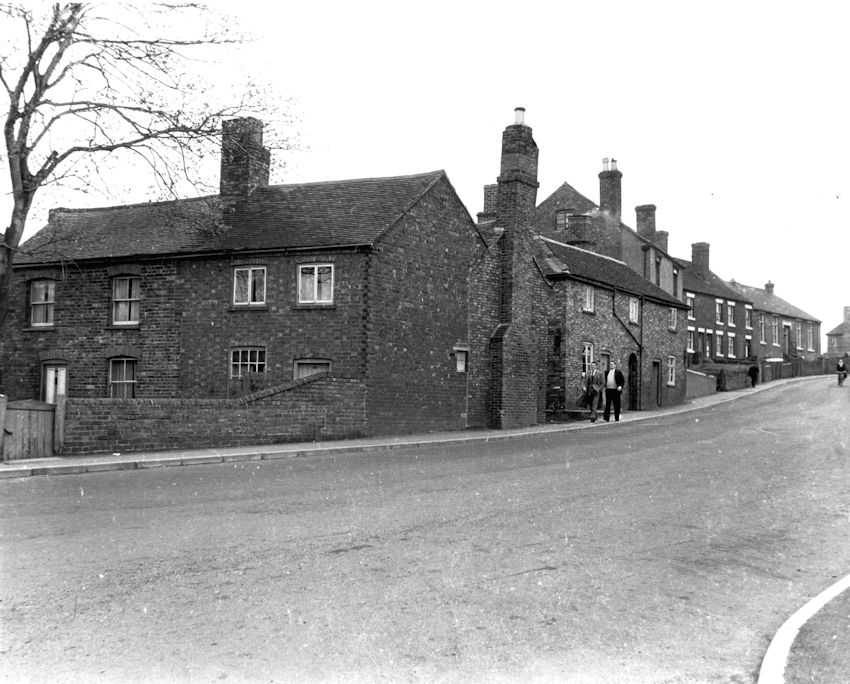
The building behind the two men was originally the Pheasant and it stood at 56 King Street.
The name of the local poet who compiled these verses is something of a mystery but they were presented to the writer about 1930 by the late Mr. Ralph Urban Callear, for many years a Rating Officer with Dawley Urban District Council. Dawley at one period of its history was often referred to as “Dawley Green”.